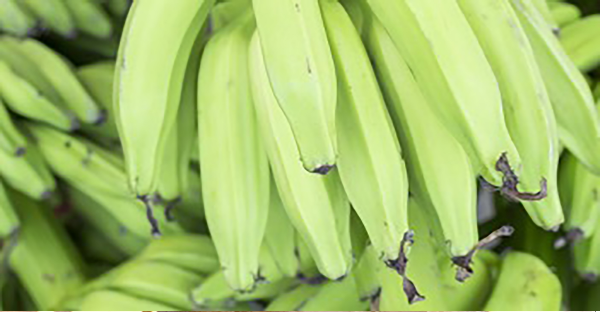
How starch diet of plantains daily keep cancer away
Resistant starch is simply starch that resists digestion in the small intestine. It reaches the large intestine and feeds the good bacteria that live in our guts. It turns out that this gut fermentation is really important to our metabolism.
Scientific studies are showing that we need to return to the historically consumed slow-to-digest resistant starch and eat far less easy-to-digest, soft, highly refined carbohydrates.
Resistant starch diets/cancers
A recent study by Matters et al., (2022) published in the journal Cancer Prevention found that starch in green bananas (as opposed to ripe ones) and some other foods, such as green plantain etc., may potentially help reduce the risk of some cancers.
The protective effect of the resistant starch was "particularly evident" for upper gastrointestinal (GI) cancers, namely: Stomach/gastric cancer (cancer in the lining of the stomach); Bile tract cancer (cancer in the organs that make and store bile, a fluid made by the liver that helps digest fat); Pancreatic cancer (cancer in the pancreas); and duodenal cancer (cancer in the first part of your small intestine).
Green banana/plantain
Green bananas naturally have a huge amount of resistant starch. I have not seen good data analysing how resistant starch is in cooked green plantains and cooked green bananas, but it might be more in other foods because there is less concentration of other components (proteins and fats) that physically interfere with the starch retrogradation.
We also need a lot of education on resistant starch as a health-promoting starch. Most people also believe that all starches are bad for you.
I compare it to the historical perspective that people initially thought that all fats were bad until we figured out that there were good fats (i.e., Omega-3 fatty acids).
We are rapidly progressing to the same distinctions in carbohydrates — and resistant starch is one of the good carbs.
I think much of the benefit comes from the processing effects. Here's a clinical study that was recently published that focused more on the levels of processing of foods.
Resistant starch was a marker within the minimally processed food group (called the Microbiome Enhancer Diet).
In this clinical trial design, Corbin et al.,(2020) describe as follows: Microbiome Enhancer Diet consisted of whole foods and four key drivers — dietary fibre, large food particle size, resistant starch and minimal processing.
Microbiome Enhancer diet provided an average of 25.8 g fibre/1000 kcals and 10.3 g of RS/1000 kcals. Western Diet provided 6.5 g fibre/1000 kcal and 1.2 g RS/1000 kcals.
They included resistant starch in their explanations of this study. This study focused on the impact of less processed foods (not just resistant starch) on major health and weight biomarkers. This is going to be a big topic as a lot of people believe that ultra-processed foods are bad.
The Washington Post, a major newspaper in the United States, covered this new study at https://www.washingtonpost.com/wellness/2023/06/13/weight-loss-calories-fibre-microbiome/.
I focus on the positive aspects of the study and emphasise the inclusion and retention of resistant starch in the diet as a way to maintain healthy eating.
People who have had poor diets for a long time may have poor intestinal barrier integrity (commonly called a leaky gut). Dr Martin Kriegel showed that probiotic bacteria triggered inflammation and problems in an animal auto-immune model.
He also showed that resistant starch fermentation helped heal the leaky gut and stopped the translocation of toxins across the gut barrier.
As they ripen, their carb composition changes. For instance, one study by Zhang et al.(2005) found that green or unripe bananas contained mostly starch, which makes up 70–80 per cent of their dry weight.
Most of the starch in green or unripe bananas is resistant starch which is not digested in the small intestine. For that reason, it’s often classified as dietary fibre.
However, bananas and plantain lose their starch as they ripen. In the course of ripening, the starch is converted into simple sugars (sucrose, glucose, and fructose). Interestingly, ripe bananas contain only one per cent starch, leaving 99 per cent in simple sugars.
Green bananas and plantain are also good sources of pectin. This type of dietary fibre is found in fruits and helps them keep their structural form.
Duan et al.,(2008) study explained that Pectin breaks down when a banana becomes overripe, which causes the fruit to become soft and mushy.
Two studies, (Wikiera et al. 2014; Birt et al. 2013) explained that the resistant starch and pectin in green bananas can provide several health benefits, including improved blood sugar control and better digestive health.
Take home
Studies have proven eating resistant diets are good for our health. Apart from green bananas and plantain, others such as fruits, non-starchy vegetables (carrots, broccoli, spinach) and beans also contain resistant starch.
The writer is a Professor of Naturopathic Healthcare, medical journalist, author, and science writer.
Email: professor40naturopathy@gmail.com
